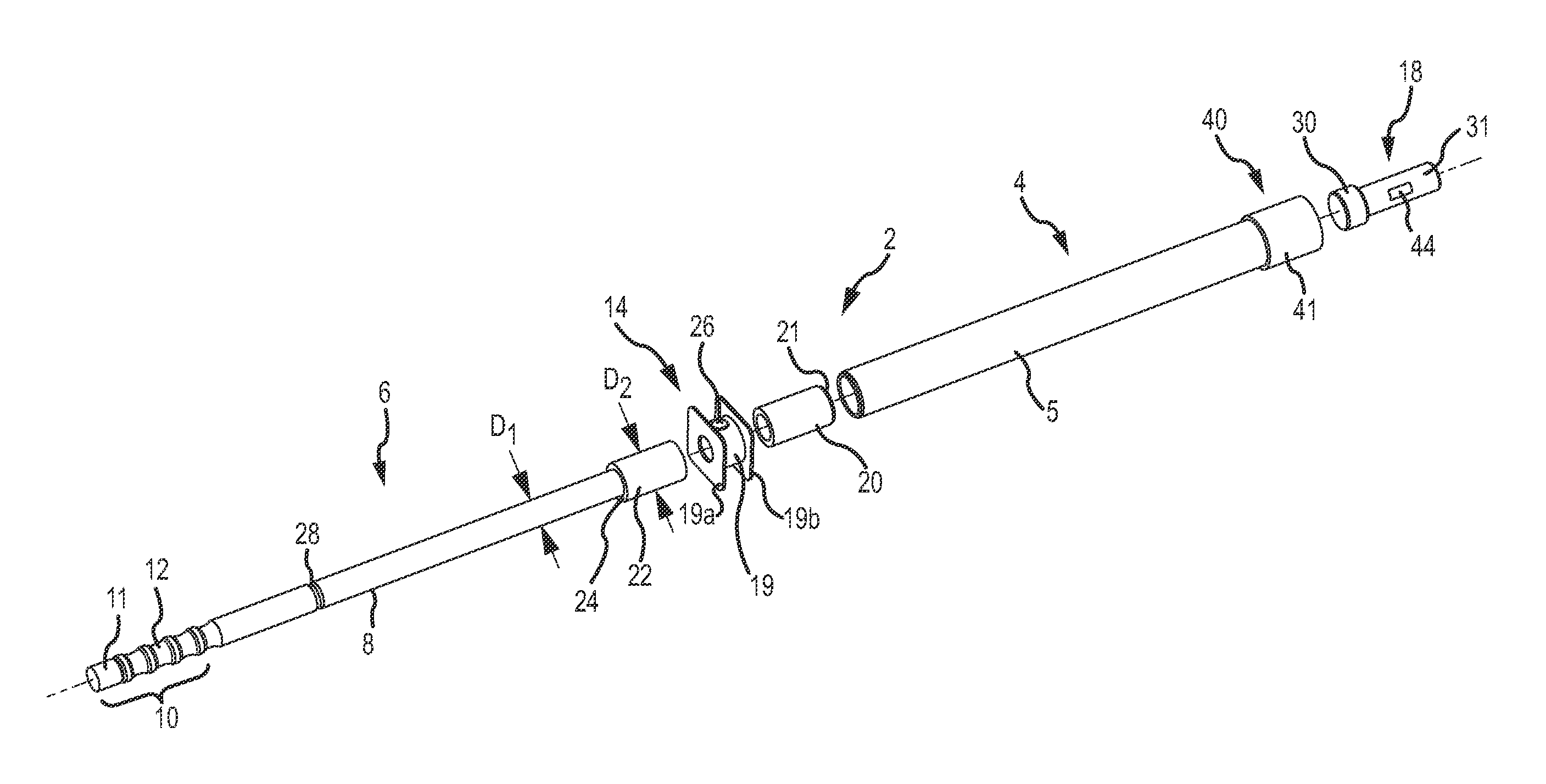Multi-use hammer device and method field of the invention
a multi-use, hammer technology, applied in the direction of screwdrivers, portable percussive tools, wrenches, etc., can solve the problems of inability to provide the directed force of pneumatic or hydraulic machines, unsuitable machines, and inability to straighten the vehicle body frame, etc., to achieve the accuracy of the angle at which the force is applied to a targeted object, and improve the accuracy of the effect of force application
- Summary
- Abstract
- Description
- Claims
- Application Information
AI Technical Summary
Benefits of technology
Problems solved by technology
Method used
Image
Examples
Embodiment Construction
FIGS. 1-3 illustrate a slide hammer device according to a preferred embodiment of the invention. The slide hammer 2 comprises a guide sleeve 4 and a drive bar or plunger 6. In operation, the drive bar 6 is placed within the guide sleeve 4 and is slidable within at least a portion of a length of the guide sleeve 4. In the depicted embodiment, the drive bar 6 comprises a substantially cylindrical shaft portion 8, a user proximal portion 10, and an enlarged drive bar end 22. User portion 10 is grasped by the user, and may include features to enhance gripping, such as a hand-grip portion 12 and / or a knurled end portion. Other features placed on the user proximal portion 10 to enhance gripping for safety and functionality of the device 2 may include rubber grips or covers, enlarged and / or detachable handle portions, and finger or hand guard portions. When the device 2 is to be used as a pull hammer to generate tension / withdrawal forces, a flanged or bulbous feature may be threaded onto o...
PUM
 Login to View More
Login to View More Abstract
Description
Claims
Application Information
 Login to View More
Login to View More - R&D
- Intellectual Property
- Life Sciences
- Materials
- Tech Scout
- Unparalleled Data Quality
- Higher Quality Content
- 60% Fewer Hallucinations
Browse by: Latest US Patents, China's latest patents, Technical Efficacy Thesaurus, Application Domain, Technology Topic, Popular Technical Reports.
© 2025 PatSnap. All rights reserved.Legal|Privacy policy|Modern Slavery Act Transparency Statement|Sitemap|About US| Contact US: help@patsnap.com



